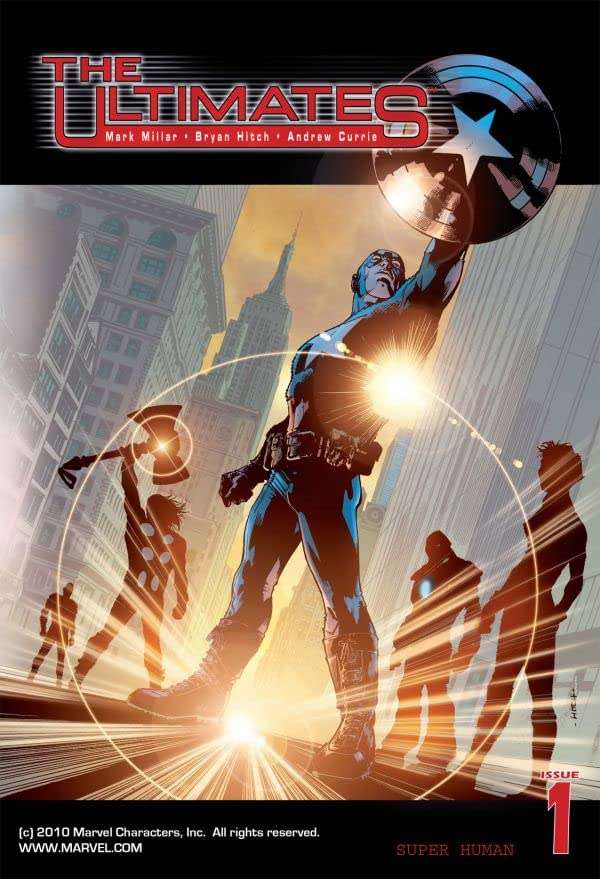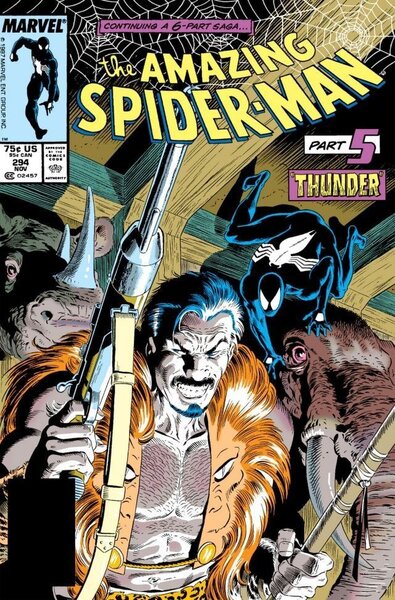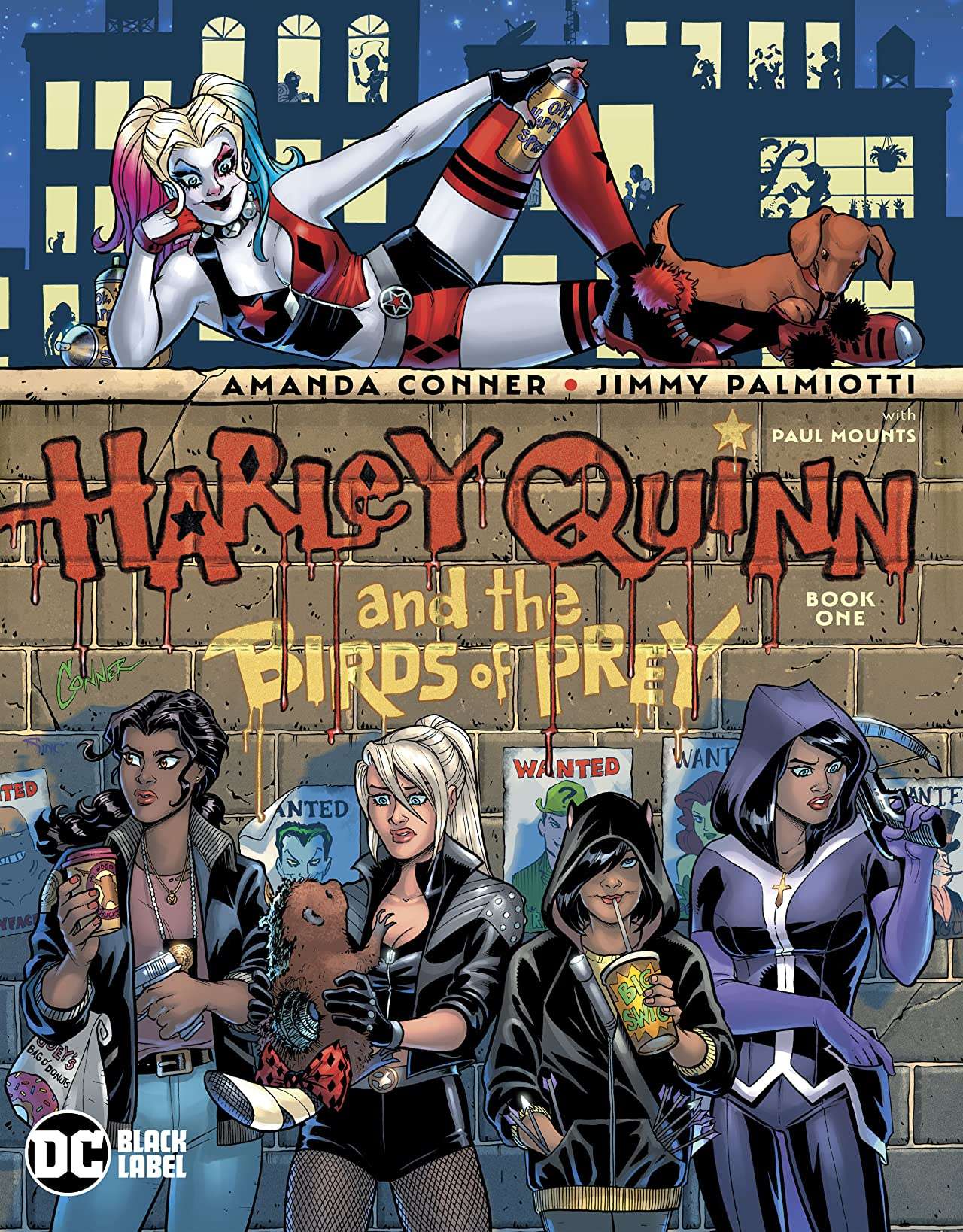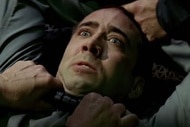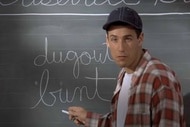Create a free profile to get unlimited access to exclusive videos, sweepstakes, and more!
How far is 'too far' when it comes to storylines for comic book characters?
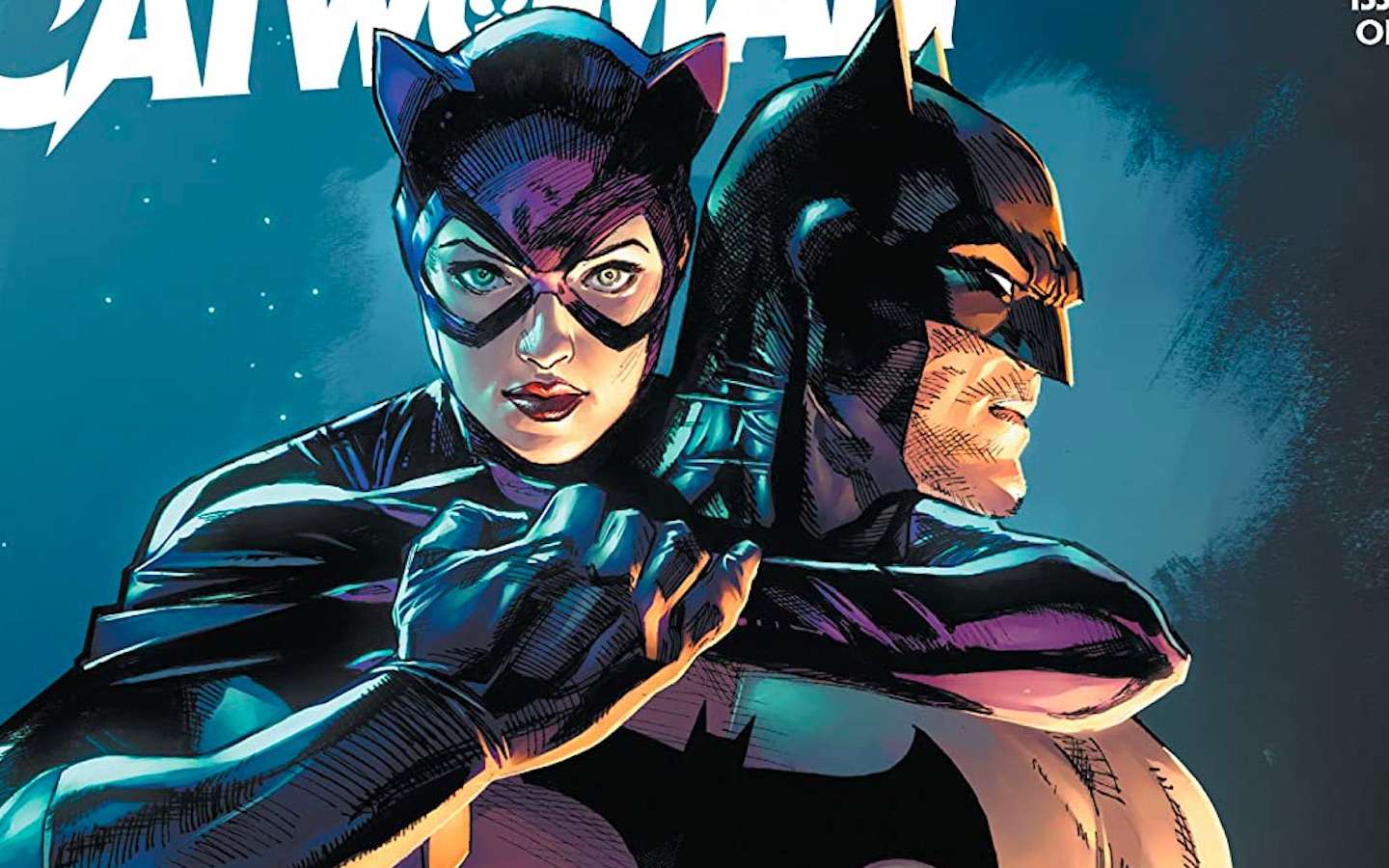
I suppose we should just get this bit of business out of the way, given that the discussion over a discarded scene in the Harley Quinn animated series involving Batman performing a certain type of “personal attention” on Catwoman has dominated #comicstwitter the past week...
OF COURSE HE WOULD.
Folks, the two loves of Batman’s life, Talia al Ghul and Selina Kyle, are not the type of women who would stand for a lover who didn’t go the, ahem…extra mile for them. If you read Tom King’s Batman run, you saw just how much Bruce Wayne was willing to do and how far he was willing to go for a chance at happiness with Selina. Plus, when has the Dark Knight ever done anything half-assed? No, that’s not even up for debate.
That silliness aside, what can be debated is whether risqué moments like that are needed for characters like Batman, Wonder Woman, Spider-Man, or any other globally-recognized billion-dollar comic book IP. Is it worth the trouble to push the envelope in that way? Does delving deep into the sexual habits and interests of a superhero add any value to their mythos?
Of course, you need to tell compelling new stories, discover new angles that show these heroes in a different light. Remember, DC’s most popular heroes are at least 80 years old. Marvel’s top dogs are pushing 60. That’s a lot of tread on those tires. Keeping them fresh and relevant requires fresh eyes that bring bolder ideas to the table.
That’s what Frank Miller did with Daredevil when he took over the book in 1979 and in 1986 with The Dark Knight Returns. It’s what Alan Moore and Dave Gibbons did with Watchmen, and what Christopher Priest did with his Marvel Knights Black Panther run. They saw the boundaries and blew past them. But comics, especially mainstream superhero comics, have always been a bit prude about sex. It’s only gotten worse since superhero films and television shows became such a vital part of Hollywood and the merchandising value of these characters increased.
Remember in Mark Millar and Bryan Hitch’s Ultimates when Hank Pym used his shrinking powers during a lovemaking session with Janet Pym? The only reason that scene exists is because Marvel was still relatively fresh out of bankruptcy and desperate for buzz. It also was not yet owned by Disney, so it could afford to allow Millar and Hitch to do something that was way out of bounds because it didn’t have to worry about corporate guardrails beyond getting Joe Quesada and Bill Jemas to say, “Go for it.” One can argue about whether it was a worthwhile moment that added anything to either character’s legacy, but it did generate attention.
That lack of corporate oversight also may have played a part in allowing another groundbreaking Marvel Comics story to see print. The 1987 “Kraven’s Last Hunt” storyline that ran across all three monthly Spider-Man books is a landmark tale created by writer J.M. DeMatteis, artist Mike Zeck, and inker Bob McLeod. The story features a number of dark, unsettling moments uncommon for most Marvel books of the era, not the least of which is the suicide of Kraven the Hunter. During a recent interview SYFY WIRE conducted with DeMatteis (more to come in an upcoming Behind the Panel column), I asked him if he had trouble getting the story approved by Marvel editorial. He told me it was, in his words, “pretty effortless.”
“Tom DeFalco, who was managing editor at the time, and Jim Owsley (later known as Christopher Priest), who was the Spidey editor, took me out to lunch and asked me to write Spectacular Spider-Man, with my Captain America cohort Mike Zeck on the art. How could I say no?”
DeMatteis went on, describing how after he put together the beats of the story that would become one of the most famous and disturbing in the Spider-Man canon, it got the green light instantly.
“When I pitched Owsley the Kraven story — which I’d been developing, in various forms, for a few years — there was no pushback at all, just enthusiasm, and what I wrote is pretty much what you see on the page. I don’t know if there was even a changed comma. And no, there were no objections to the suicide,” DeMatteis said.
I remember reading “Kraven’s Last Hunt” as a teenager and being stunned by its darkness, and by the heaviness of its subject matter. I was surprised to hear DeMatteis received no initial pushback, but then again, while suicide is a mature, complicated subject… it’s not sex. And sex always scares the hell out of the people who make the decisions at the major comics publishers.
That’s why the subplot about Batman performing oral sex on Catwoman appearing in an animated series produced by Warner Bros. (even one airing on HBO Max) had as much chance as happening as a rainbow appearing over Gotham City. But creators must follow their ideas through and see where they go. But when you’re dealing with valuable IP owned by massive corporations, how do you navigate those obstacles?
“The process is simple, first ask yourself creatively what you are trying to do or say about the character,” Lee Bermejo, the superstar artist who knows a thing or two about controversial Batman stories, told SYFY WIRE. Bermejo and writer Brian Azzarello created the best-selling Batman: Damned graphic novel that launched DC’s Black Label, an imprint literally designed for more mature takes on the company’s legendary heroes. They wound up at the center of a hailstorm of media coverage due to an image that showed Bruce Wayne in his birthday suit.
Bermejo insisted he and Azzarello weren’t just trying to stir up trouble. “Ours wasn't a desire to be edgy for edginess' sake, but we tend to try and walk the path untrodden because, with a character like Batman who has 80 years of stories, there is a lot of ground already covered,” he said. “In our case, we wanted to take Batman into territory where his flawed humanity revealed a more vulnerable and human Batman in a world where Batman is always armored, 10 steps ahead, and an unstoppable force of will. Our question was how to make readers see Batman 'naked' in a way never before. Big difference between being naked and being nude.
“Our editors knew what we were doing and the initial marching orders were to make a Batman comic that could be an HBO show in terms of its content,” Bermejo continued. “They were on board with this idea and supported us fully. The problems came into play when a change of management due to a corporate merger turned DC comics into a company run by fear. The brand became more important than the storytelling. TPTB [the powers that be] at the time made the decision to censor NOT because of any outrage (there really wasn't any, just a few jokes on late-night tv) but because they thought they might lose their jobs.”
The fallout from Batman: Damned may have indirectly impacted another Black Label book, last year’s Harley Quinn and the Birds of Prey mini-series. That series reunited Harley with the husband-and-wife creative duo most responsible for turning her into “the Fourth Pillar of the DCU,” Amanda Conner and Jimmy Palmiotti. According to Palmiotti, they returned to the character because they were assured they could take the story in more mature directions than they had during their best-selling 2013-2018 run.
“We were lured back with the promise the Black Label series could be uncensored, which really appealed to us,” he told SYFY WIRE. “What we were promised was not what happened and we did the best we could, but we knew it was time to once again move on. We were happy to see that we inspired a lot of the insanity of the animated series and were jealous they could get away with a ton more than what we did.”
There is a perception that when a comic book is selling like gangbusters, the creative team gets carte blanche to do whatever it wants, as long as the cash registers keep ringing. That certainly seems reasonable, but it is completely false. More success brings more scrutiny, as Palmiotti experienced during the five years he and Conner turned Harley into a superstar who, for a brief moment, even outsold Batman.
“When we first started writing Harley, no one at DC was really looking closely at what Amanda and I were doing, which gave us a lot of room to go crazy, and we did,” said Palmiotti, who along with his wife are spending the bulk of their creative time on creator-owned projects for their company PaperFilms. “We would pitch an idea for the issue, get an okay, and write it, but editorial did not get full script till it was ready to go to print — which let us get away with a lot at the time. Once the book started selling and licensing on the character went through the roof, the restrictions and watch got understandably heavier. We always had to remember that our series was all ages, not a mature audience book. So [eventually] we felt it was time to move on, which was fine. We had a great run and we felt we made our mark.”
Bermejo echoed the fact that racking up big sales doesn’t immunize creators from editorial interference. He is one of those rare artists who can sell books on name value alone. Fans love his hyper-realistic art style, in which a hero wears military footwear instead of buccaneer boots. Bermejo’s costumes have creases, and sometimes those suits reveal certain aspects of a man’s anatomy. That kind of attention to detail is still very much a problem at mainstream comics publishers.
“I have had multiple covers changed to eliminate the crotch bulge in a character's costume, most recently in Superman: Red and Blue,” he said. “Basically, cleavage is no problem but the moment you realistically draw a man in his underwear, they want you to make him look like a Ken doll. This is the modern equivalent of the removal of male genitalia from statues. It says more about their fear of realism than it does anything about sexuality. Or at least, I'd like to think of it that way. Otherwise, it paints a bleak picture of an industry on the wrong side of history.”
Palmiotti recalled being warned ahead of time about lines not to cross with Harley, which is hilarious on its own since the character’s basic premise is about ignoring boundaries. “We had storylines that we were told in advance to not go there and because we do not own these characters and work within perimeters put on us, we didn’t,” he said. “But again, we would always push as hard as possible. Any comic reader should understand that the best work they will get from their creators are when they are taken off the leash.”
DeMatteis noted that all creators doing work-for-hire for Marvel and DC need to go in with reasonable expectations about what they want to accomplish, because there will always be limits to what you can do with Superman, or the Hulk, or Wonder Woman, whether it has to do with sex or not. “These are characters that have been around for 60 years, 80 years, and will be here long after we’re all gone,” he said. “The editors are the custodians of the characters and, let’s face it, you can’t have a stream of writers coming along and upending the fundamental elements that made those characters a success.
“But fundamentals aren’t formula," he continued. "There’s still lots of room to play, to bring a personal stamp to these characters. The trick, I think, is to stay true to the essence of the characters and yet bring your own unique vision to the table, widening and deepening them within their established structures. I can write a story with Spider-Man or Batman or whoever and make it deeply personal — as personal in some ways as any creator-owned project — while still respecting the elements that made that character successful.”
What’s your take on this whole Batman thing? Does he, or doesn’t he? Find me on Twitter/Instagram and let me know.
Don't forget that Behind the Panel is a multi-platform series. Our video series is loaded with my in-depth interviews with some of the best comic book creators in the business. The Behind the Panel podcast is an audio documentary series that provides unique insight into your favorite creators and stories. Check 'em out, we think you'll enjoy them.
The views and opinions expressed in this article are the author's and do not necessarily reflect those of SYFY WIRE, SYFY, or NBCUniversal.
